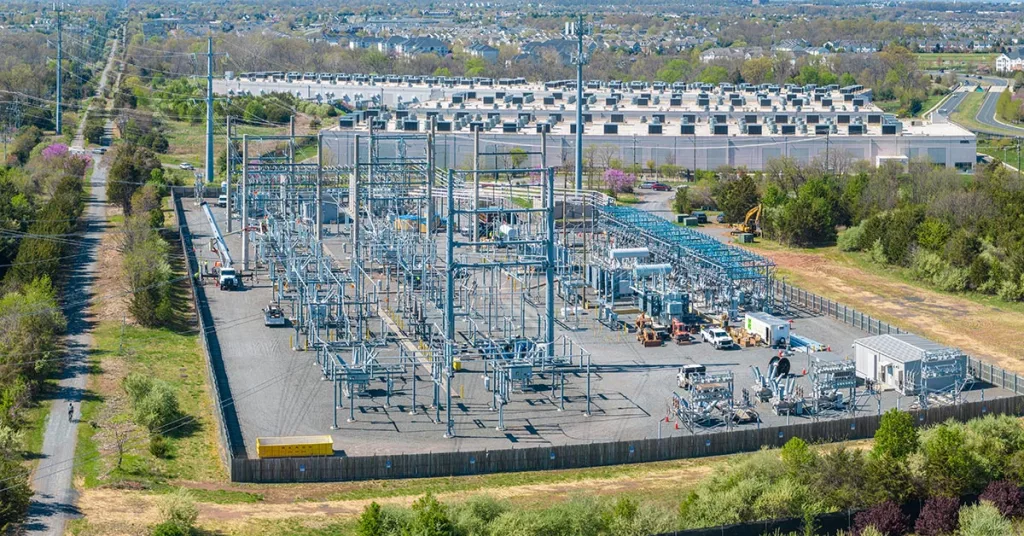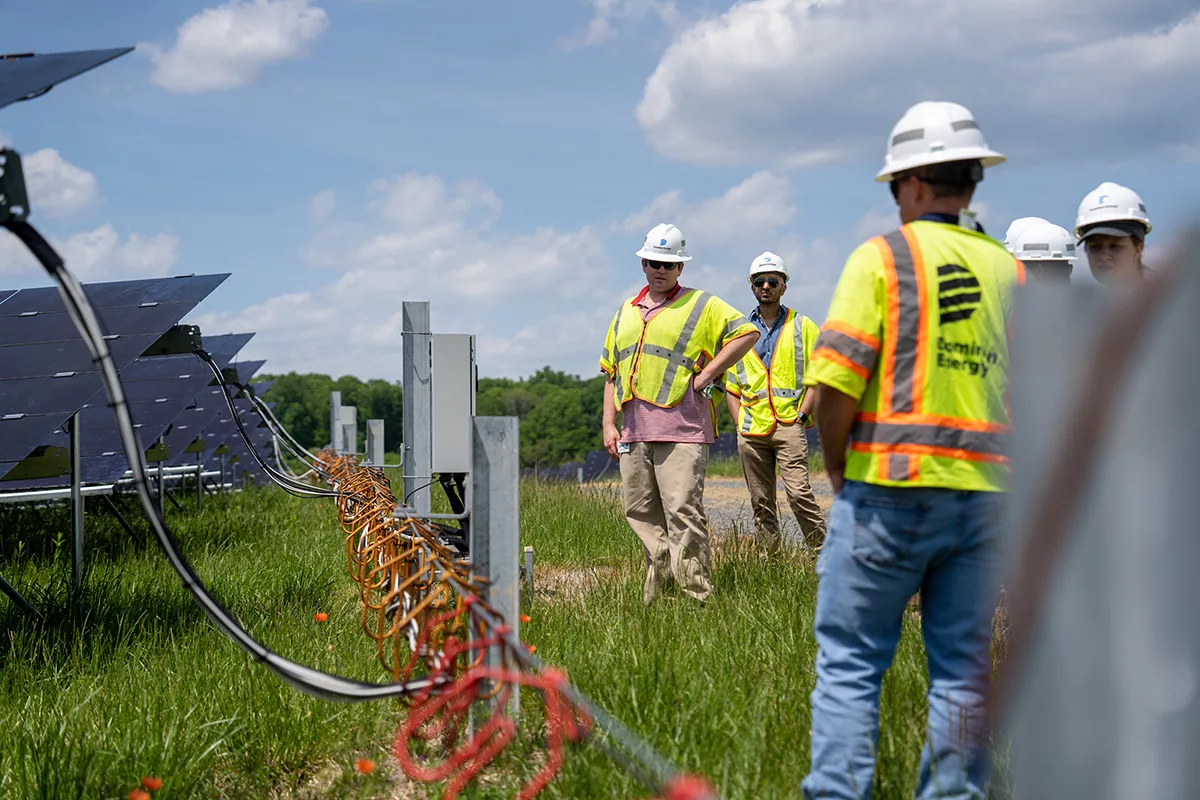The Virginia Clean Economy Act of 2020 mandates that Dominion Energy deliver 100% of its energy from renewable sources by 2045. Unfortunately, the proliferation of high-energy-use data centers is moving the goalpost and making Virginia’s clean energy goals much more difficult to meet. Understanding the importance of addressing the climate challenges before us, and the impact that choices about energy have on the lands and waters of the region, PEC has created a new Senior Energy & Climate Policy Analyst position.
Ashish Kapoor has joined the PEC staff to fill this important new role, and we sat down with him recently to learn more about how and why the transformation of our energy system is so important. Ashish Kapoor can be reached at akapoor@pecva.org.
Q: Why is a focus on energy so important for PEC and for Virginia at this point in time?
We are in unprecedented times. In light of climate change, it’s never been more important to get a handle on how all the big-picture factors interact with one another: the climate, community, energy creation, and the transmission to get that energy to its users, whether they be homes, businesses or, increasingly, data centers. How we meet these challenges, while also protecting our land and natural resources for future generations, will ultimately be our legacy.
Q: What experiences are you bringing to this new role, and what is exciting to you about it?

I am a lawyer and consultant by training and, like many others, reevaluated my priorities during Covid. I grew up in western Pennsylvania, hiking and camping across the Appalachian trail, and now, as the father of two young daughters in Virginia, I felt more and more that I wanted to do everything I could to contribute to a better energy and climate future for them. My wife and I started a business aimed at providing non-toxic products for young children, and I decided to jump headfirst into solar energy consulting. Working as a national sales consultant for a large residential solar company gave me the chance to talk with folks all across the country with intention. I got a very good feel for the anxieties people have around energy costs and climate, as well as the varying state and local factors that can encourage buy-in.
I come to PEC as a practical environmental advocate and a strong believer that building solar on built structures, like parking lots, rooftops, brownfields, and landfills, can help protect our farmland and resources while moving us toward a carbon-free energy future.
Q: Virginia’s Clean Economy Act requires that Dominion produce 100% of its energy from renewable sources by 2045. What are the challenges to hitting that goal?
Dominion’s latest Integrated Resource Plan (IRP), which is a required periodic assessment of future electric needs and what action is required to meet those needs, shows a massive increase in anticipated energy demand — on the level of two to three times what it is now. That is almost wholly attributable to data centers and, to much lesser extent, electric vehicles. Whereas electric demand is decreasing nationally, and would be in Virginia too, Virginia’s increasing concentration of high-energy-usage data centers is pulling us in the opposite direction and rapidly eating away at the renewable energy gains we all have fought so hard for.
Q: What is it going to take to get there?
In order for Virginia to get to 100% renewable energy, getting a handle on data center load growth is paramount. We need a comprehensive and independent study of the effects of data centers on our climate goals, energy system, water resources, and air quality, and how these combined will affect our local communities and Virginia ratepayers.
On the energy generation side, rhe trajectory of increase in demand is simply not sustainable. On average, one data center using 30 megawatts (MW) of energy would require 300 acres of land of utility-scale solar — and a lot more land, or batteries, taking into account the intermittent nature of solar energy. Northern Virginia has hundreds of data centers with countless more being planned, so that’s a tremendous amount of new electricity demand. Dominion’s IRP makes clear that the plan is to fill in the demand gaps with more gas and coal, further harming local air and water quality and pulling Virginia in the wrong direction on greenhouse gas emissions.

At the same time, we also need to remain thoughtfully vigilant about helping localities plan and site a growing number of utility-scale solar facilities to help power data centers and support Virginia’s clean energy future. We must ensure that impacts to our most sensitive natural, cultural and historic resources are avoided and that proper mitigation is implemented.
Q: What are some of the first items on your plate as you dive into this new position?
For the first several months, I am attending conferences on data centers, organizing a solar-on-the-farm workshop for later this year, working on the Solarize Piedmont campaign, engaging with the Virginia Conservation Network and the DEQ taskforce as part of HB 206, and advocating for various distributed solar solutions. The intersection of conservation, natural resources, energy supply and demand, and climate change puts PEC in position to advocate for meaningful solutions toward a clean energy future in Virginia.

Ashish Kapoor (2nd from left) recently joined other PEC staff members and Dominion Energy representatives at a utility-scale solar facility in Remington. Photo by Hugh Kenny/PEC
Q: This is a tough field with a lot of challenges, viewpoints, and nuance. What gives you hope?
We need to appreciate the wins. Through community engagement, we were able to stop the variance that would have allowed data centers to run 4,000+ polluting diesel generators more often, in violation of local air quality permits. Only by working together can we successfully push against challenges to air quality, water resources, and land use, and guide Virginia into a clear and more sustainable future.
As challenging as the problems are, the potential solutions are just as exciting. There are possibilities for battery storage, microgrids, electric transportation, agrivoltaics that combine solar energy and farm use, distributed clean generation, and the like. It will take a multitude of potential solutions, and I’m hopeful that the stark realities of the energy situation as expressed in the IRP will ultimately move us in the right direction before we get to a place where the damage can’t be undone.
Every day is a reminder how these big issues connect with our day to day. Seeing my older daughter play soccer, with the Blue Ridge mountains as the backdrop and massive 500 kilovolt transmission lines in the immediate foreground, is a reminder that all of these energy issues affect not only the global climate, but also the places where our feet touch the ground. I believe that people are increasingly waking up to that reality and pushing for institutional change while also making positive personal choices around energy — like being more energy efficient, installing rooftop solar, choosing electric vehicles — that will cumulatively make a difference.
This article appeared in the 2023 summer edition of The Piedmont Environmental Council’s member newsletter, The Piedmont View. If you’d like to become a PEC member or renew your membership, please visit pecva.org/join.
